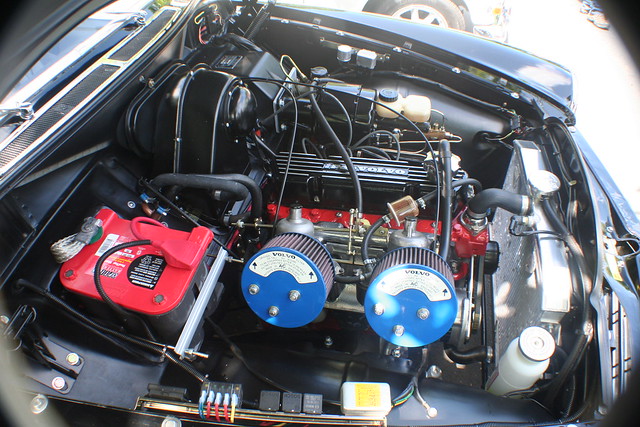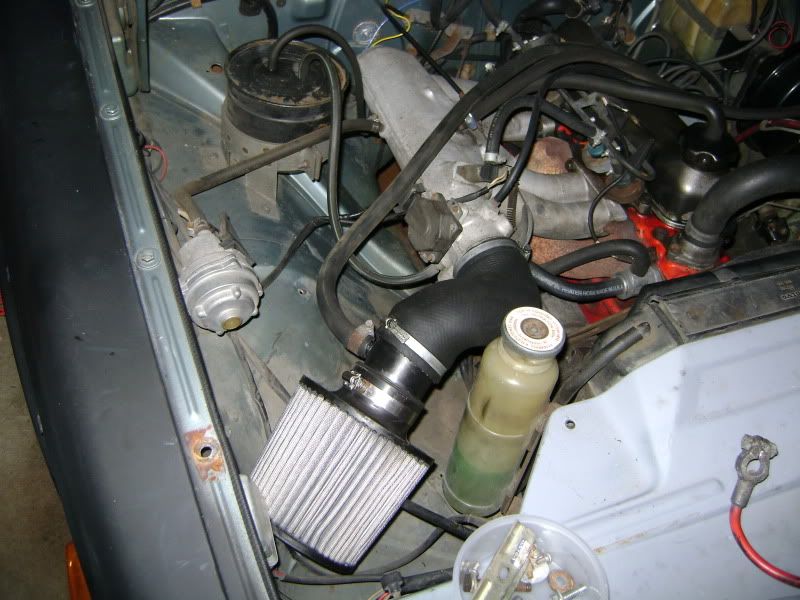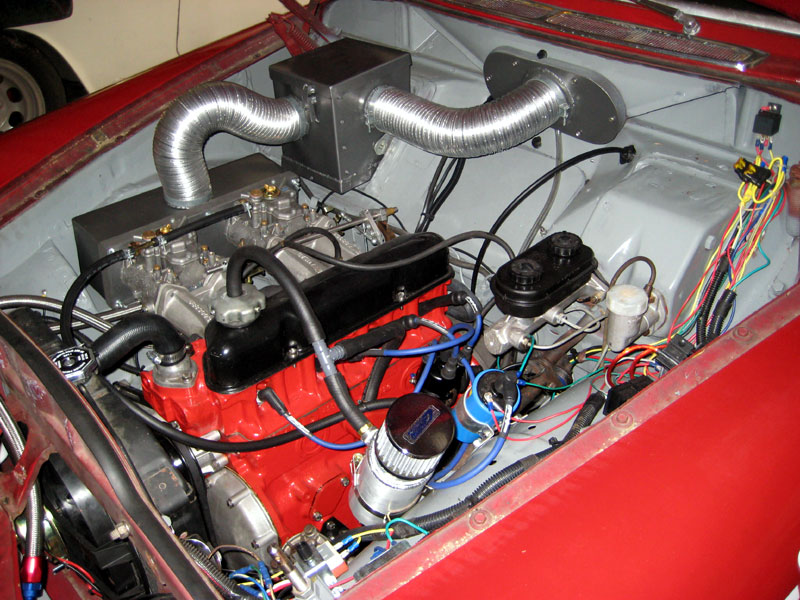Hello All,
Recently completed a small upgrade to the B18 motor in my 65' 122s and thought I would share it on here. For those of you who like to come up with new ideas and custom modifications hopefully this is helpful. I'm not claiming this is the "best way", just simple the way I decided to do it.
We all know the stock replacement air filters that fit the SU carbs in many of our old Volvos can be; expensive, hard to get, ugly, flow poorly and just lack any kind of "cool" factor.
When I purchased my amazon and opened the hood I found two very old, and very dirty, stock air filters. Here's a pic of what I was dealing with:

After pricing the replacements at $75 each, and determining that I didn't like the look of adding a 140 air-box I decided to come up with my own solution.
Design Phase:
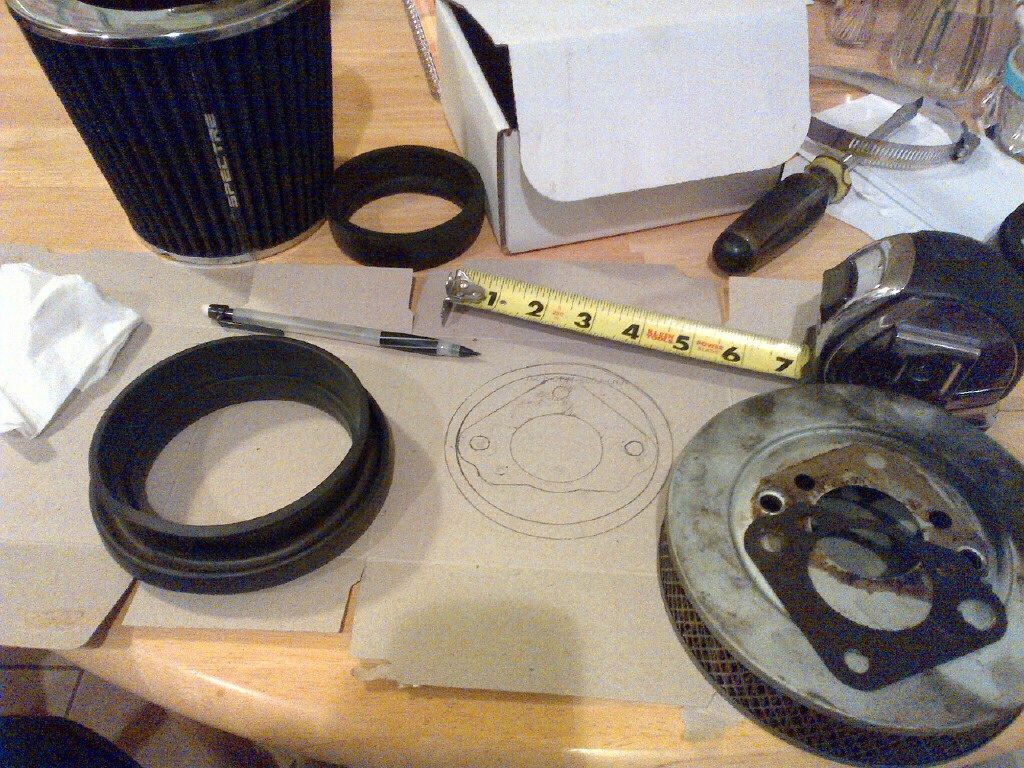
The project began with a trip to the scrap bin at work, hoping to find some 3" aluminum pipe I stumbled across some true "Scrap Treasure"... two pieces of hacked up 4" aluminum round stock. So I changed my design and took it to the drill press and lathe:
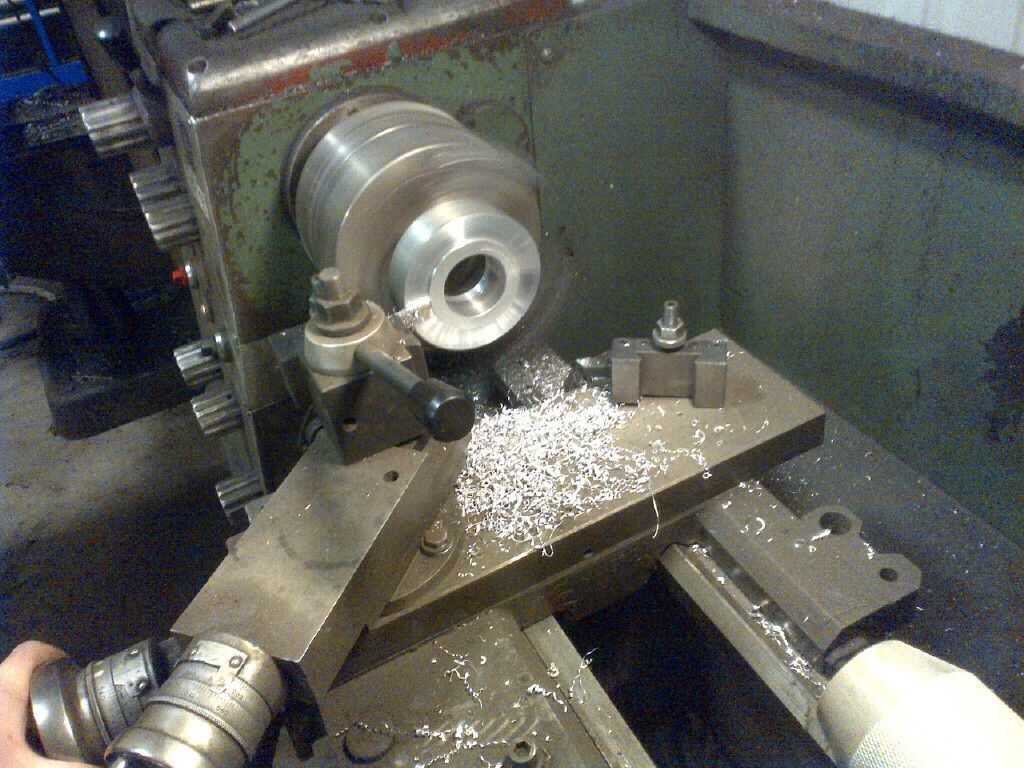
A little while later my adapters we're ready! Did I mention that they double as mini velocity stacks?

During the install I realized I would need to obtain some shorter bolts then the stock configuration:

Found some great hi-flow reusable air filters from spectre that fit under the hood perfectly.(Spectre p/n: 8161) These are also available in a variety of colors to match other color schemes. Did I mention that they we're only $20/ea
Here's a pic of the finished project:

Better looking, better flowing, and cheaper!
Recently completed a small upgrade to the B18 motor in my 65' 122s and thought I would share it on here. For those of you who like to come up with new ideas and custom modifications hopefully this is helpful. I'm not claiming this is the "best way", just simple the way I decided to do it.
We all know the stock replacement air filters that fit the SU carbs in many of our old Volvos can be; expensive, hard to get, ugly, flow poorly and just lack any kind of "cool" factor.
When I purchased my amazon and opened the hood I found two very old, and very dirty, stock air filters. Here's a pic of what I was dealing with:

After pricing the replacements at $75 each, and determining that I didn't like the look of adding a 140 air-box I decided to come up with my own solution.
Design Phase:

The project began with a trip to the scrap bin at work, hoping to find some 3" aluminum pipe I stumbled across some true "Scrap Treasure"... two pieces of hacked up 4" aluminum round stock. So I changed my design and took it to the drill press and lathe:

A little while later my adapters we're ready! Did I mention that they double as mini velocity stacks?

During the install I realized I would need to obtain some shorter bolts then the stock configuration:

Found some great hi-flow reusable air filters from spectre that fit under the hood perfectly.(Spectre p/n: 8161) These are also available in a variety of colors to match other color schemes. Did I mention that they we're only $20/ea

Here's a pic of the finished project:

Better looking, better flowing, and cheaper!

